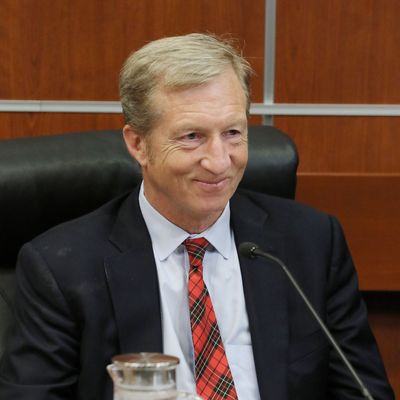
The Democratic Party needs to pick its bloodied body off the mat before the GOP kicks out what remains of its ribs.
Within the next 23 months, there will 38 gubernatorial elections. Twenty-seven of the governor’s mansions up for grabs are occupied by Republicans. Team Blue needs to win as many of those races as possible — because if Democrats don’t mount a state-level resurgence in the next two years, they could be locked out of Congress for another decade.
When the new census came out in 2010 — and congressional districts were redrawn — the GOP fully controlled the process in 18 states; for Democrats, that figure was six.
After the tragic events of November 8, the Republicans enjoy unified control of state government in 24 states.
Even without gerrymandering, Democrats suffer a structural disadvantage due to the fact that their base is clustered in cities — providing the party enormous margins in a few congressional districts, while putting them in the minority in many others.
Add district maps drawn by the GOP — with the benefit of modern data science — and you have a situation where Democratic congressional candidates need to win 8 percent more votes than Republican ones for the party to have any hope of controlling the lower chamber.
If Democrats aren’t able to claw back a whole bunch of statehouses and governor’s mansions between now and 2020, the risk isn’t merely that they’ll be stuck with this sorry state of affairs — the risk is that their structural handicap will become even more severe.
It will not be easy to nullify this risk. Democratic voters have proven themselves habitually disinterested in midterm elections. It’s possible that this will change with the party out of power. But even if Democrats are able to engineer high turnout, they will not necessarily be assured of victory: Somehow, in a presidential election year, the party just lost the governorship of Vermont.
Which is to say: Candidates matter. And the Democrats’ lack of power on the state level has left their bench quite thin; so thin that, after a couple weeks of surveying the talent, three of the party’s mega-donors decided they’d seen better 2018 candidates the last time they looked in the mirror.
Per Politico:
In three major states with a governor’s mansion up for grabs in 2018, a big-name, politically active billionaire or multimillionaire is taking steps toward a run — donors looking to take matters into their own hands after 2016’s gutting losses.
In Florida, it’s John Morgan, a wealthy attorney who has long been one of the Democratic Party’s biggest swing-state fundraisers. In Illinois, it’s J.B. Pritzker, the businessman and philanthropist with a history of pumping cash and Chicago political support toward Hillary Clinton. And in California, it’s Tom Steyer, the hedge fund manager turned climate activist who used the 2014 and 2016 election cycles to become one of the left’s single biggest donors, to the tune of over $140 million. And more may be on the way.
Some progressives may find the notion that Democrats would seek to emulate Donald Trump’s success by nominating their own billionaires — as opposed to their own (self-styled) economic populists — a bit distasteful.
But it’s true that Democrats have had recent success with the “self-funding magnate” model: The party took the Pennsylvania governorship with furniture mogul Tom Wolf, and West Virginia’s by nominating the richest man in the state, (the not very liberal, but very well-named) Jim Justice.
And because the stakes of the 2018 gubernatorial races are so high, Democratic candidates in large states will need to weather floods of conservative money — money that tends to go a lot farther on the state level than it does on the presidential one.
In a better, more progressive world, Democrats would have made strengthening unions a top priority during those brief periods (over the past four decades) in which they controlled the federal government. But with organized labor weak and getting weaker, the party has become increasingly reliant on other funding sources.
In 2016, Bernie Sanders proved that in high-visibility, national elections, crowd-funding can be one alternative model. But it remains to be seen whether that model can work on the state level. If it can’t, the “millionaires and billionaires” that the socialist senator loved to rail against may increasingly become the standard-bearers of America’s left-wing party.






























